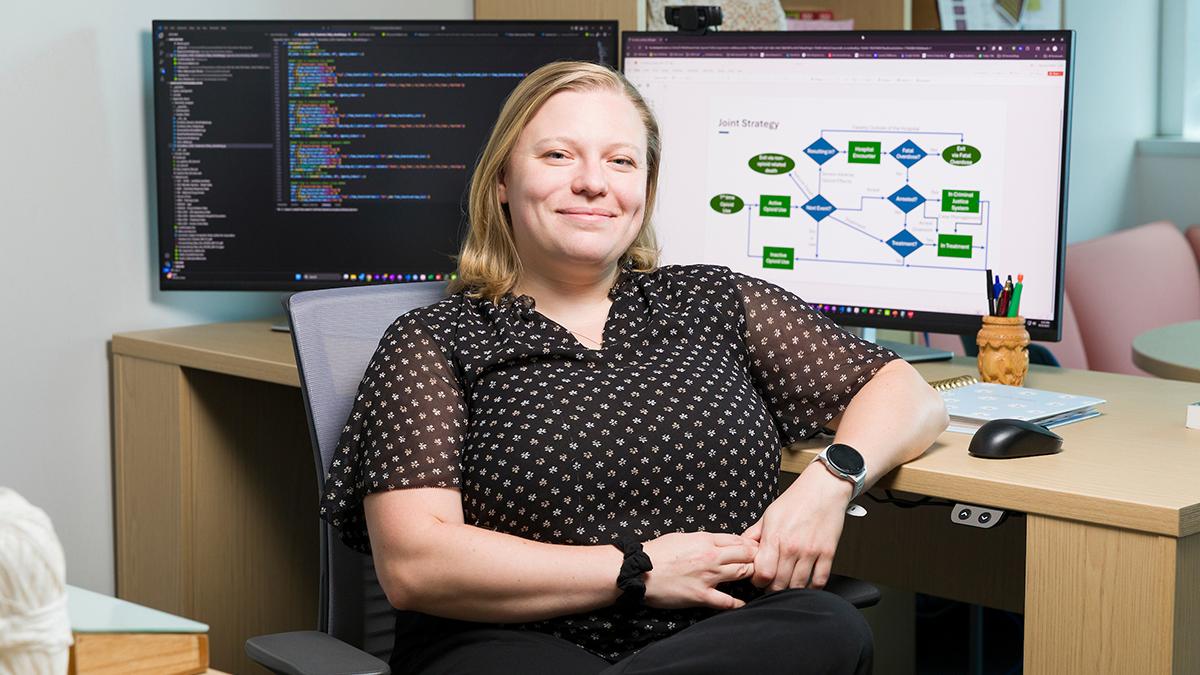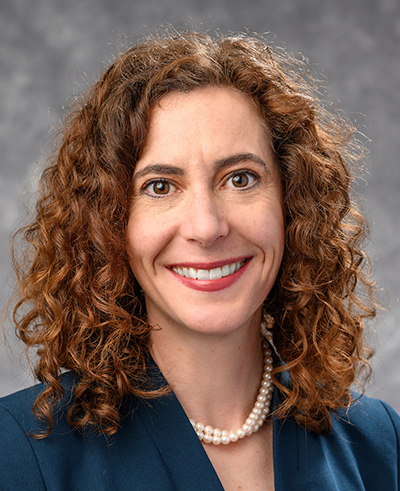
Veronica White, Ph.D., began studying the efficacy of opioid treatment programs while a graduate student at the University of Wisconsin-Madison. Recently published results shed light on how well these programs actually work. (Scott Holstein/FAMU-FSU College of Engineering)
Engineering Researchers Predict Which Treatment Programs Save Lives and Reduce Costs
More than 81,806 Americans died from opioid-related overdoses in 2022, overwhelming hospitals and trapping thousands in cycles of addiction. But a new data-driven approach from engineering researchers at FAMU-FSU College of Engineering and the University of Wisconsin-Madison offers measurable hope.
Using mathematical modeling and operations research, the team has developed a framework to evaluate which substance use disorder treatment programs actually work—and which deliver the greatest impact for communities struggling with the opioid crisis.
Engineering Solutions for Public Health

Professor Laura Albert, the project’s principal investigator at the University of Wisconsin-Madison, partnered with Veronica White, assistant professor at Florida A&M University and the FAMU-FSU College of Engineering’s Department of Industrial and Manufacturing Engineering, to analyze opioid diversion programs that redirect people toward treatment instead of incarceration.
“I had been applying industrial engineering and operations research methodologies to public safety for years, and it was clear the opioid crisis was a huge problem for communities and law enforcement,” Albert said. “I saw an opportunity for industrial engineering to make a tangible difference to communities by leveraging data and mathematical models to not only make communities safer but also healthier.”
White began this research as a graduate student at Wisconsin and recently brought the work to the joint college, where she plans to expand the study’s scope.
The research was published in the journal IISE Transactions on Healthcare Systems Engineering in an article titled “Evaluating Diversion and Treatment Policies for Opioid Use Disorder.”
“We plan to expand our work to analyze earlier points of contact, especially mental and behavioral health crisis calls,” White says. “These often overlap with opioid use disorder but also affect people with a wide range of needs.”
Measuring What Works in Substance Use Disorder Treatment
Law enforcement agencies nationwide have increasingly shifted from arresting individuals for nonviolent drug offenses toward connecting them with personalized treatment programs. These diversion initiatives aim to break the use-arrest-use cycle that often leads to incarceration without addressing underlying addiction.
But do these programs actually reduce overdoses, hospitalizations and deaths? Until now, data has been scarce.
“Preliminary analysis suggested that arrest diversion was promising,” Albert said. “The big question remained, do these initiatives actually make a measurable difference for a community? It’s a simple question, but the answer is complex. To answer this question, we leveraged community-sourced data and mathematical models to provide insights into which programs are most effective and how to best use limited resources.”
Modeling Three Opioid Crisis Intervention Strategies
The researchers used mathematical modeling to predict how three different opioid crisis solutions would impact communities over time, including treatment uptake rates, costs, hospital visits and potential deaths.
The three programs evaluated:
- Arrest diversion: Redirecting individuals arrested for opioid offenses to treatment programs instead of jail.
- Overdose diversion: Connecting overdose patients in emergency rooms with recovery coaches who provide ongoing support.
- Reentry case management: Pairing people released from jail with case managers who help them access treatment and social services.
“The project kicked off in response to a pressing challenge faced by the Madison Area Addiction Recovery Initiative (MARI) in Wisconsin,” White shared. “While they were able to track individual success, they lacked a way to quantify the ripple effects on the wider community.”
The research team gathered data from the Substance Abuse and Mental Health Services Administration (SAMHSA) and the Centers for Disease Control and Prevention to build their models.
White noted the importance of collaboration: “Working with Captain Joseph Balles (retired) from the Madison Police Department and Professor Aleksandra Zgierska from Penn State University allowed us to home in on essential community metrics, such as treatment uptake and program costs. Their expertise provided invaluable insights, ensuring our models accurately mirrored the realities of the community.”
Data Shows Significant Cost Savings and Lives Saved
The study reveals that when at least 20% of eligible individuals are diverted to treatment, communities experience substantial improvements in public health outcomes.
The study reveals that when at least 20% of eligible individuals are diverted to treatment, communities experience substantial improvements in public health outcomes.
Overdose diversion emerged as the most impactful strategy, followed by reentry case management and arrest diversion. The researchers project potential societal cost savings from 2023 to 2032—excluding program implementation costs—ranging from $39 million to $584 million.
“We showed that it’s possible to capture meaningful, statistically significant improvements when looking at a single jurisdiction with locally developed programs,” White stated.
The research confirms that while individual community needs vary, expanding treatment capacity consistently produces the most significant reductions in deaths, arrests and hospitalizations.
The researchers emphasize that addressing the opioid crisis requires combining treatment policies with harm reduction and prevention efforts rather than relying on any single intervention.
Future Research on Mental Health and Crisis Response
White envisions expanding the research to examine multiple touchpoints where people experiencing substance use disorder or mental health challenges interact with the criminal justice system, including crisis hotlines and drug courts.
“By understanding these pathways, we can help communities design interventions that improve public health and safety at the same time.”
This collaboration between FAMU-FSU College of Engineering and the University of Wisconsin-Madison demonstrates how engineering methodologies can address pressing public health challenges. The research offers evidence-based guidance for policymakers and communities seeking effective, cost-efficient approaches to the opioid crisis.
Editor’s Note: This article was edited with a custom prompt for Claude Sonnet 4, an AI assistant created by Anthropic. The AI optimized the article for SEO discoverability, improved clarity, structure and readability while preserving the original reporting and factual content. All information and viewpoints remain those of the author and publication. This article was edited and fact-checked by college staff before being published. This disclosure is part of our commitment to transparency in our editorial process. Last edited: 09/30/2025.
RELATED ARTICLES
New Model Helps Researchers Locate Best Spots for Field Hospitals After Disasters
Researchers Improve 3D Printing Quality with Between-Machine Experience Transfer
